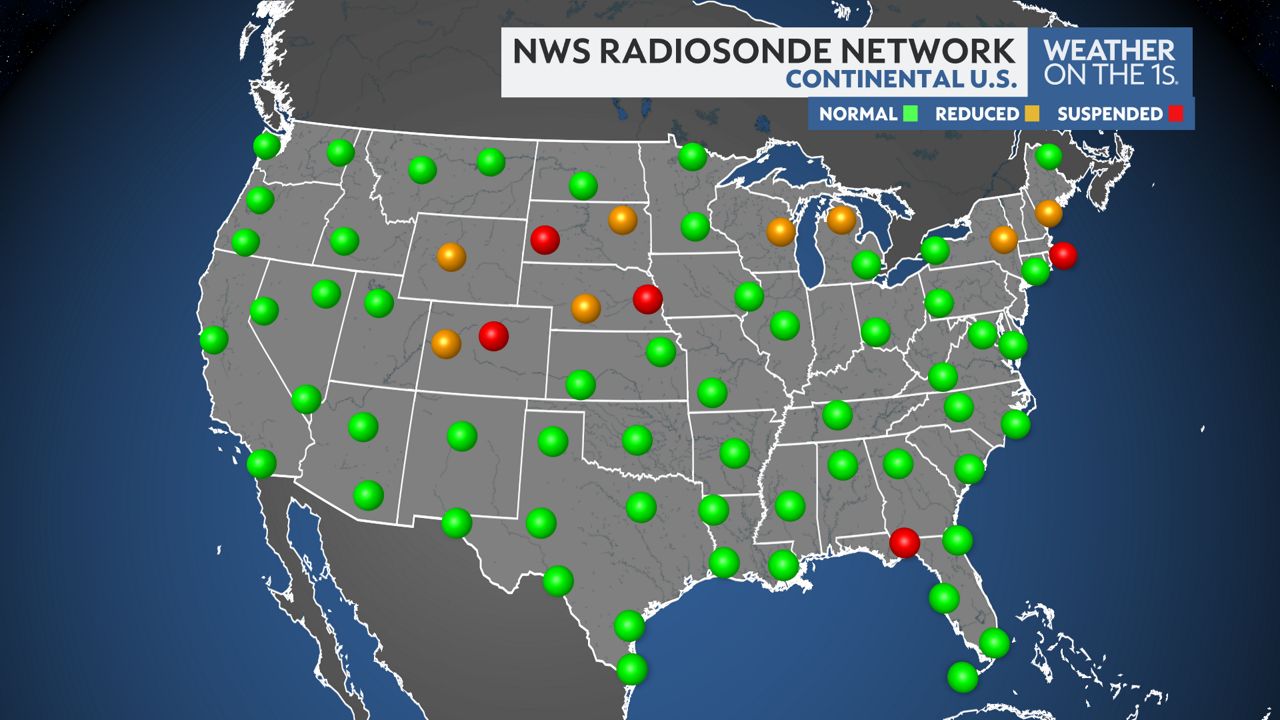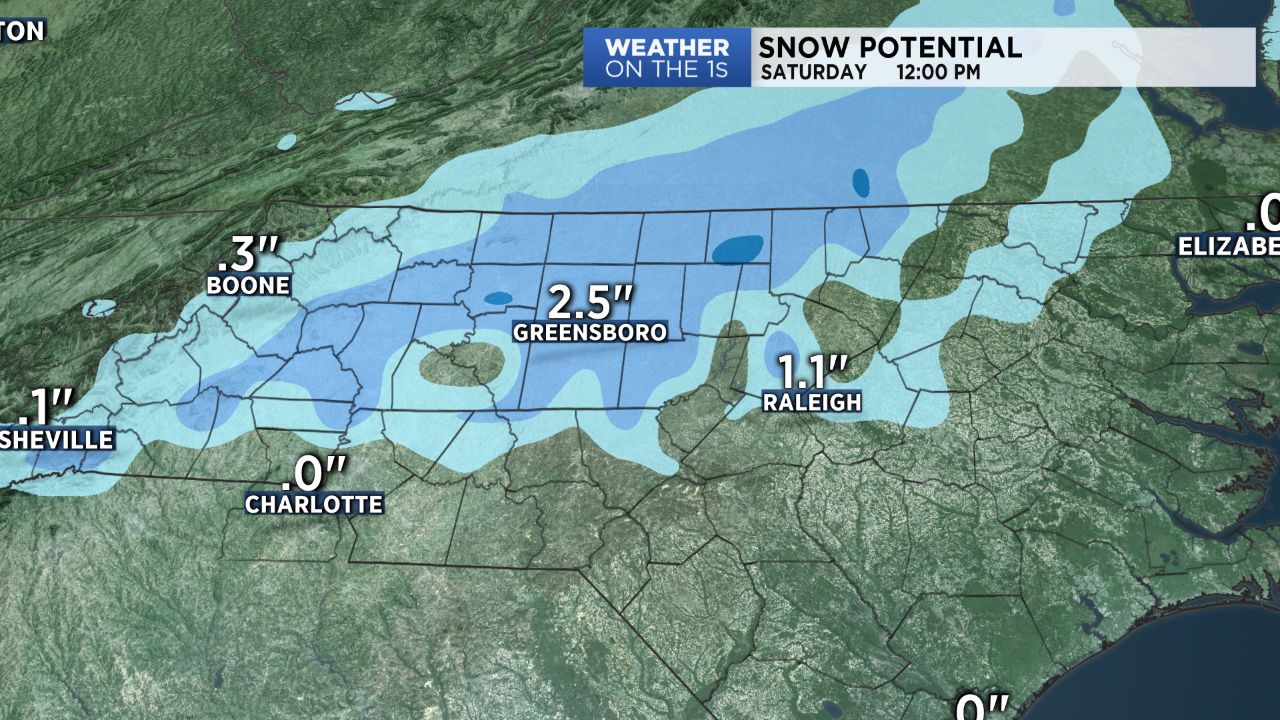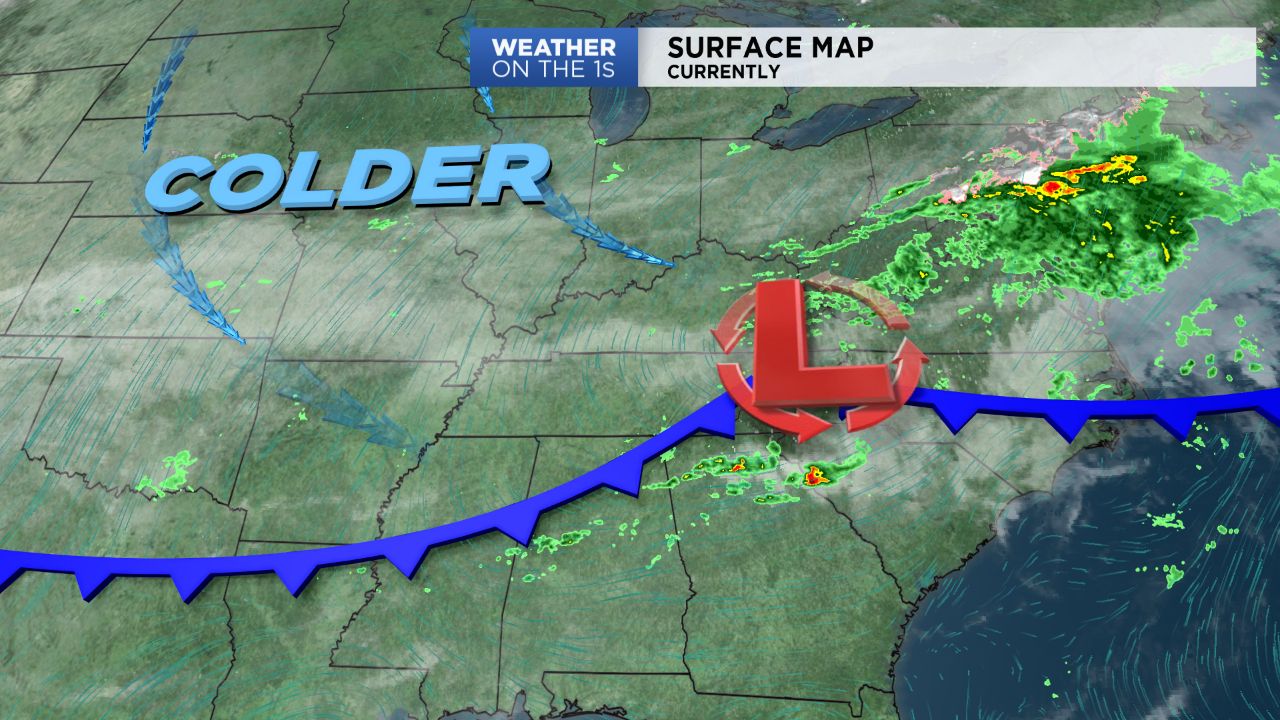MOREHEAD CITY, N.C. — The meteorologists at the National Weather Service play a key role in developing an accurate weather forecast we can rely on every day. That is especially the case in hurricane season.
The weather service office in Newport/Morehead City is one of two locations in North Carolina that launch weather balloons twice a day to collect weather data.
“The idea is all balloons launch at the same exact time around the world. And then that data is fed into what we know as the forecast models,” science and operations officer Ryan Ellis said.
Ellis has been working for the weather service in Morehead City for six years and says the balloon launches are like a coordinated dance.
Each morning the team fills a balloon with hydrogen and releases it into the sky. Attached is a device called a radiosonde that collects data from the atmosphere.
The device will capture humidity, wind speed and direction, atmosphere pressure and temperature.
"It's also going to take the dew point,” he said.
The more frequently balloons are released, the more accurate the data will be Ellis says.
"There's only a balloon here in Morehead City and there's another one in Greensboro North Carolina — those are the only two in the state," he said. "And then you have Roanoke Virginia, Wallops Island, Virginia, Charleston, South Carolina."
"So if you miss one of those balloons, you have a really big gap in your data,” Ellis said.
Each balloon takes about an hour and a half to reach 100,000 feet and then it will pop. The weather service team will then begin to create forecasts based on balloon data and surface observing systems at airports.
In severe weather, the releases are often increased to better predict the impact of a storm.
“The more data points you can get, the better off your model data is going to be," Ellis said. "You start taking those points away, that forecast starts to degrade."
When conditions quickly change, their data can help keep the public informed and safe.
"We have this continuous stream of information so that we are constantly in touch with ... the emergency managers, those folks that have to make the really big important decisions to, say, evacuate the Outer Banks," he said. "The sooner we can get information to them, the more data and the more ability they have to make really high-stakes decisions.”
Data from the weather balloons gets ingested into computer models and that helps the Weather on the 1s team determine steering currents for storms.
As the 2025 Atlantic hurricane season begins, there are fewer balloon launches taking place across the country compared to last year due to federal budget cuts and staffing shortages at the National Weather Service.

While most of the suspended launch sites are pretty far away from North Carolina, the missing data could still impact our local forecast.
Conditions in the upper atmosphere over the western and central United States can often affect the weather in the Carolinas within a few days.
That's critical information that can tell meteorologists the direction a hurricane will move, and the lack of data is causing concern on how it may impact the accuracy of forecasts this hurricane season.
Our team of meteorologists dives deep into the science of weather and breaks down timely weather data and information. To view more weather and climate stories, check out our weather blogs section.









